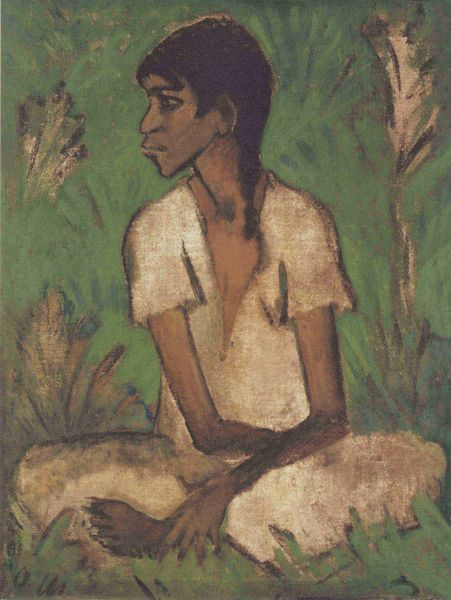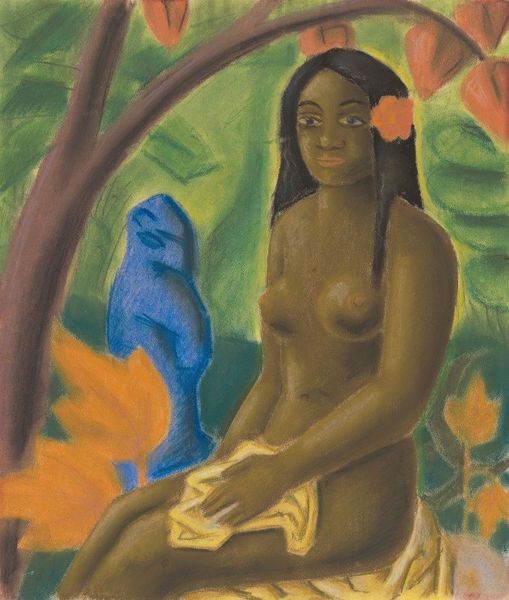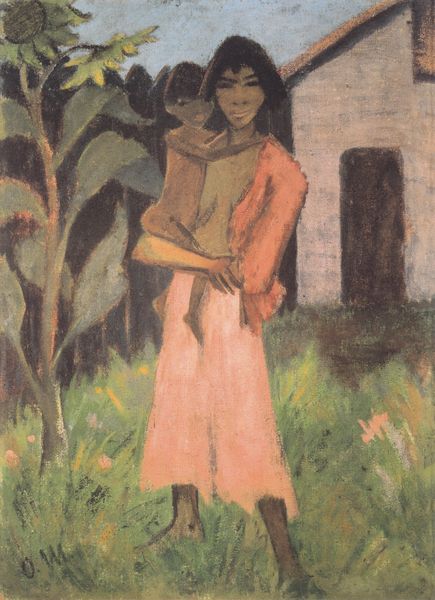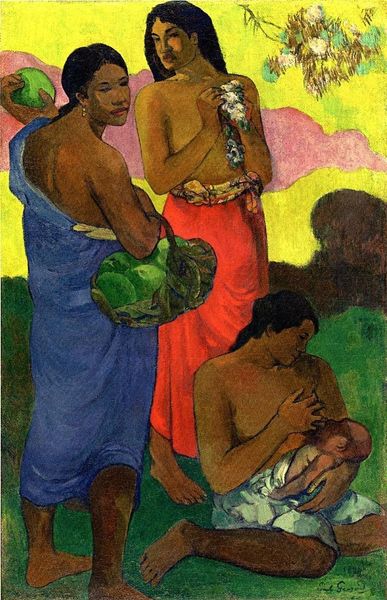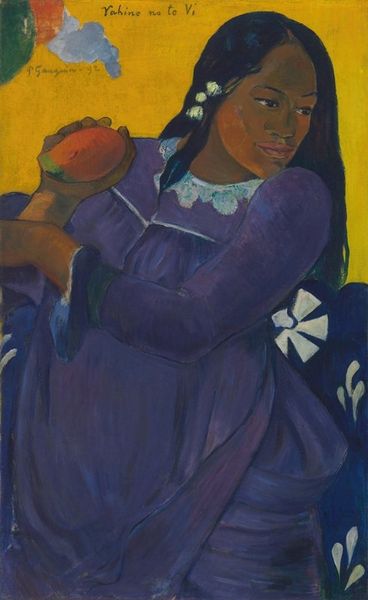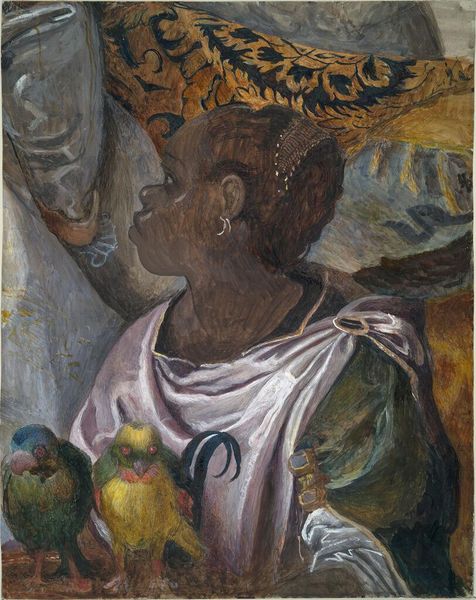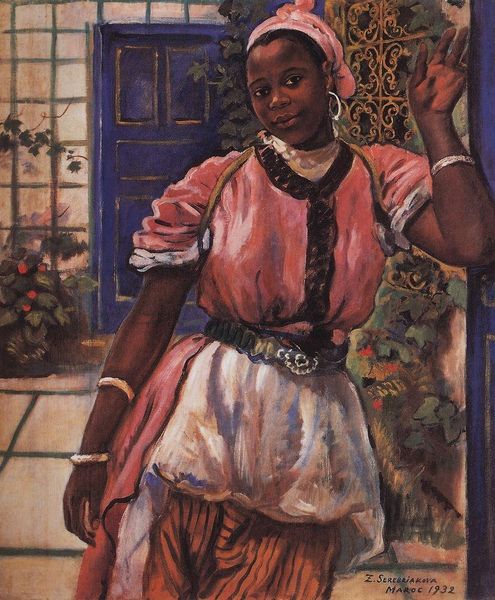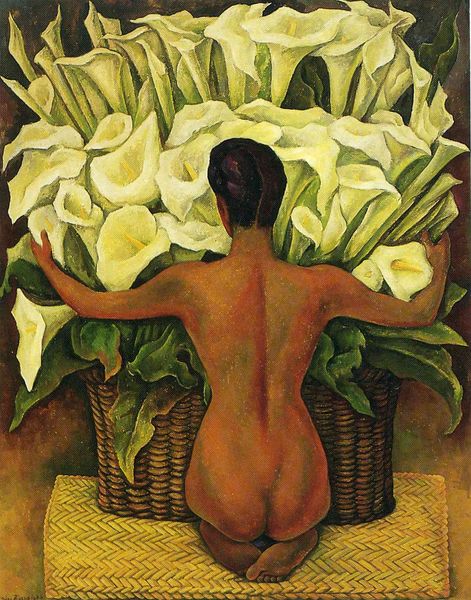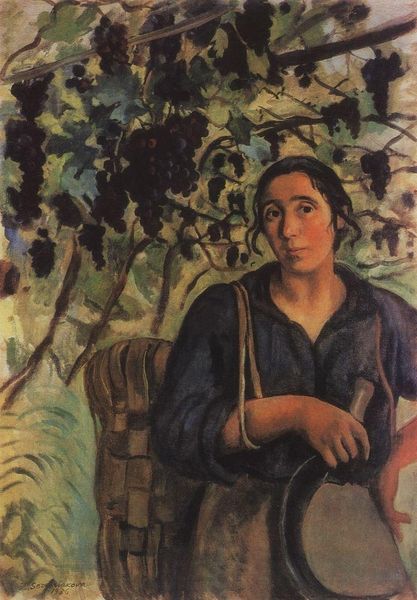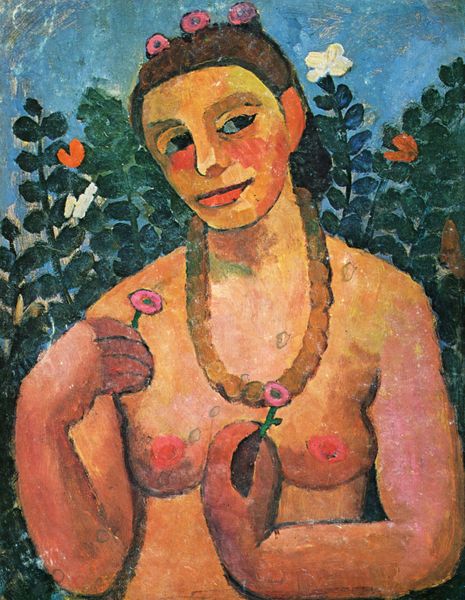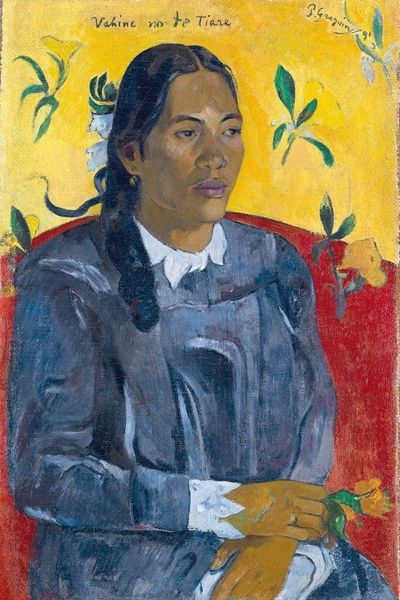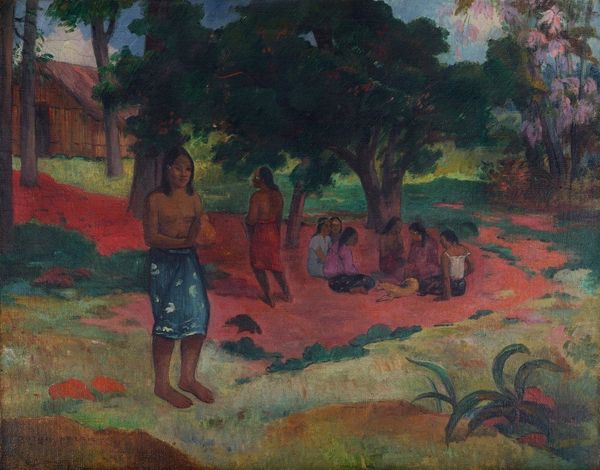
Copyright: Public domain US
Curator: Today, we're examining "Tropical," a captivating 1917 oil on canvas work by Anita Malfatti. Editor: It strikes me as quite serene. There’s a languid, almost drowsy feel evoked by the figure and the way the colors seem to blend into one another. What do you see formally? Curator: Formally, the composition uses bold, almost Fauvist colors that immediately draw the eye, don’t you think? Note the simplification of forms, like the fruit and the backdrop of foliage. The artist prioritizes color and line over detailed representation. Editor: Yes, and it’s crucial to remember that Malfatti, a Brazilian artist, painted this shortly after returning from Europe where she was exposed to avant-garde movements. It reflects a desire to engage with a distinct Brazilian identity, moving away from purely European academic styles toward something…indigenous, almost. Consider, too, how the painting, while depicting tropical abundance, also frames its female subject in a space of labor and presentation of self. Curator: Exactly. Look at how the light renders almost sculptural forms in the leaves; also consider the planar arrangement that flattens out the visual space—we find very little traditional illusionistic depth here, instead finding planes of color intersecting. Editor: It prompts me to think about race and representation within Brazilian art history during that time, as well as questions surrounding depictions of the female body, the exotic other. How do we read this portrait beyond a formalist lens, taking into account Malfatti’s place as an emerging female artist and intellectual operating within very specific cultural parameters? Curator: You’re bringing crucial elements into the conversation. Returning to structure: the artist plays cleverly with warm and cool colors—juxtaposing yellow fruits against a subtly green and beige background creates tension while suggesting a specific location. Editor: The image also seems to foreshadow questions that are still relevant today—about environmental exploitation and sustainability and postcolonialism as it concerns Latin American Identity. Curator: Certainly, Anita Malfatti provides a compelling dialogue between formalism and the socio-political landscape of early 20th century Brazil. Editor: A dialogue which certainly provides critical contexts.
Comments
No comments
Be the first to comment and join the conversation on the ultimate creative platform.
